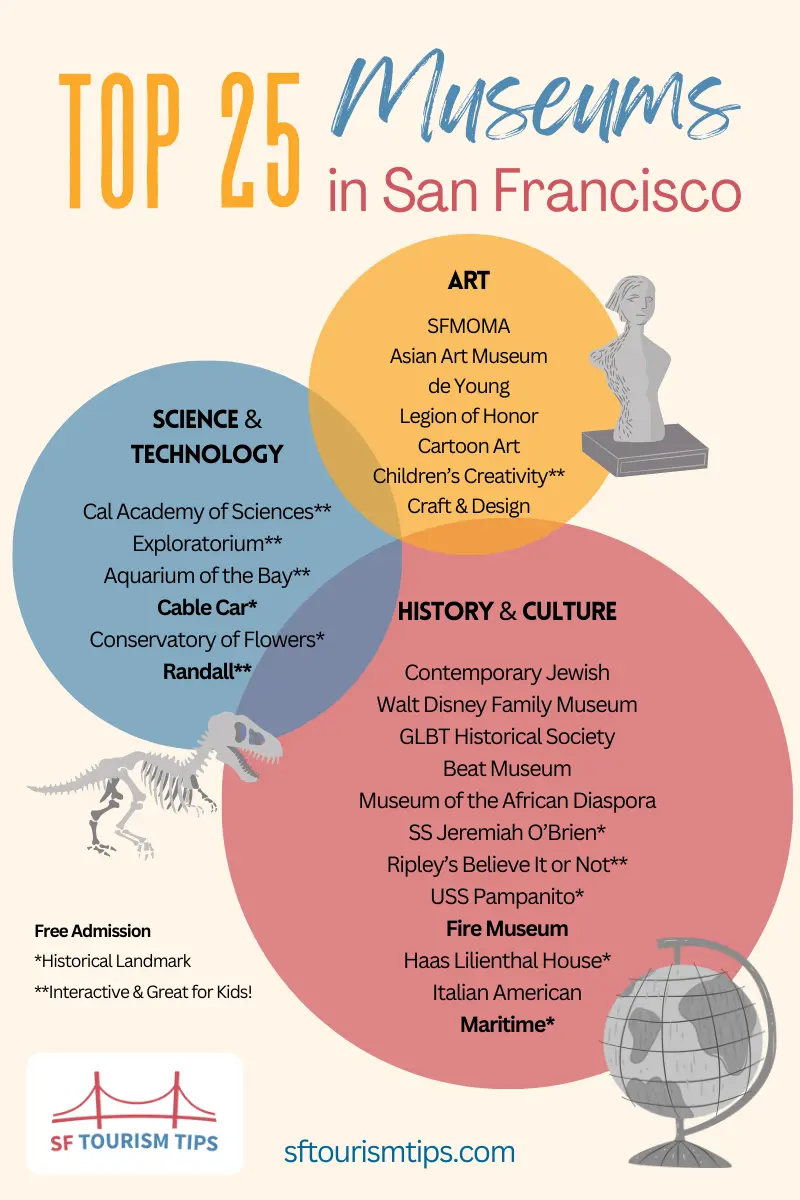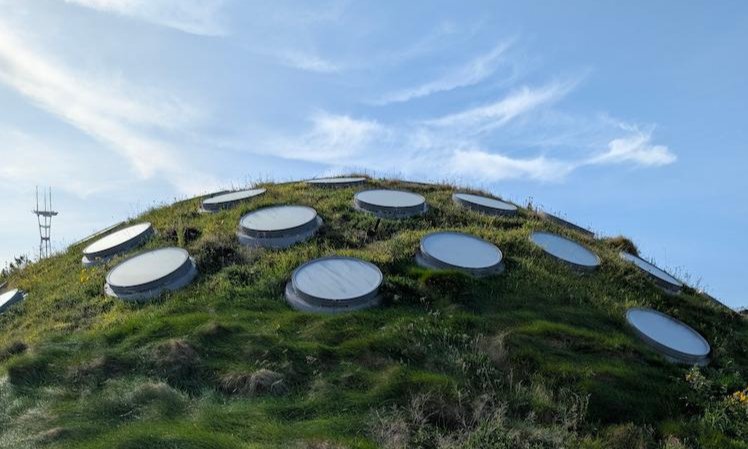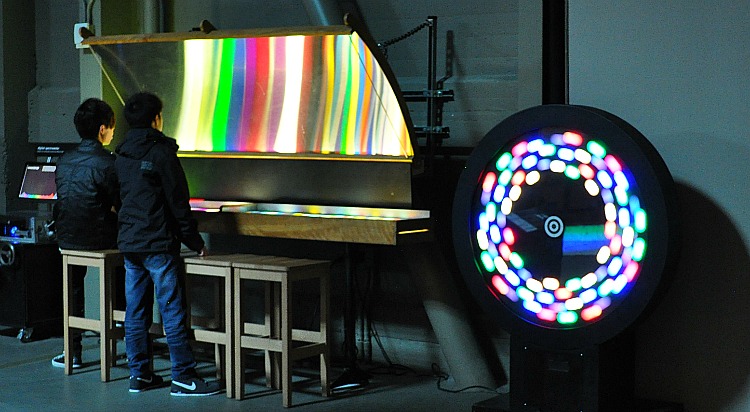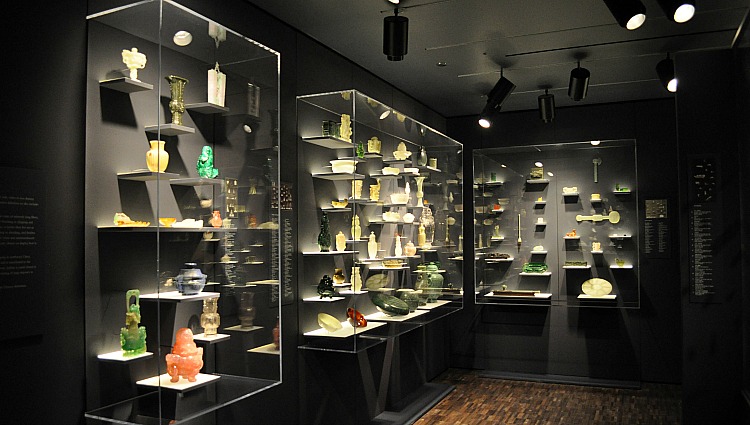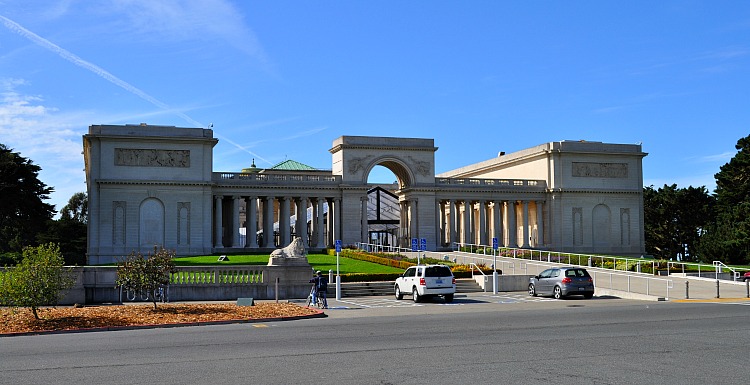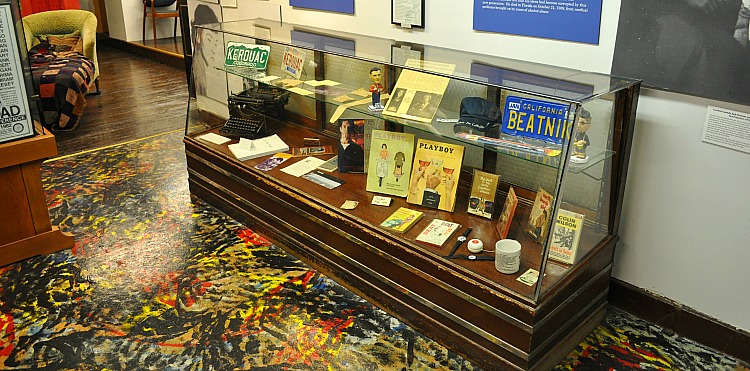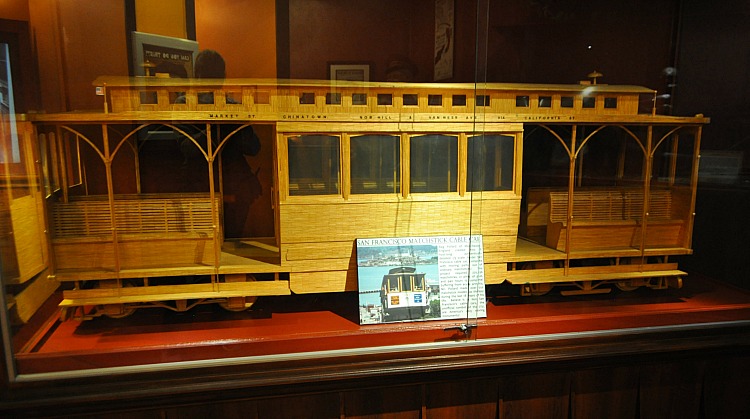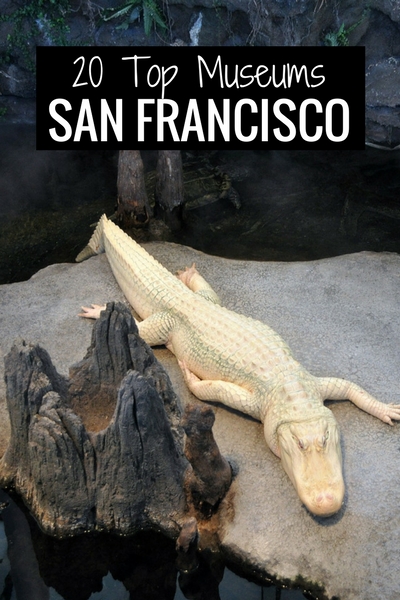SIGN UP FOR MY EMAIL TO RECEIVE YOUR FREE SAN FRANCISCO PLANNING GUIDE.
- Home
- Museums
San Francisco Museums: 25 Top Picks
By: Jill Loeffler • Updated: December 5, 2025
What are the top San Francisco museums to visit? My list of the top 25 museums in SF includes those focused on art, history, culture, and science.
You will find several kid-friendly and uniquely San Francisco places on my list of museums in San Francisco.
Some of them are free all the time, while others offer free admission days throughout the year.
The range and quality of these SF attractions are the reason why so many visitors and locals love them.
Top picks include the California Academy of Sciences, the Exploratorium, and the San Francisco Museum of Modern Art (SFMOMA).
Other highlights include the Asian Art Museum, the Aquarium of the Bay, and the Legion of Honor.
If you're wondering how many museums are in San Francisco, you'll be amazed to find dozens spread throughout most of our major districts, from downtown San Francisco museums to others tucked away in parks and residential areas.
San Francisco Museum Updates
Before you check out my list of the top 25 SF museums, I wanted to call out some recent changes.
- New Museums: Right at the corner of Haight and Ashbury, check out the funky new Counterculture Museum, sister to our popular Beat Museum in North Beach. Learn more about these new additions.
- Temporary Closures: As of 11/30/25, the Beat Museum is temporarily closed for seismic retrofitting until mid-2026. The Contemporary Jewish Museum is temporarily closed due to financial concerns.
- Permanently Closed: Recently, two of our museums have closed permanently. Pier 24, which was a free photography museum, and the Wells Fargo Museum.
SFTourismTips is made possible by readers like you! If you book through my links, I may earn a small commission at no extra cost to you. Thanks for your support! Learn more.
New Museums in San Francisco
Discover the latest temporary exhibitions and new museums in San Francisco.
Counterculture Museum
This museum could not have a more appropriate location than this famous corner at the heart of the Haight-Ashbury District.
Created by the founders of the Beat Museum, it offers a deep dive into the transformative social movements of the 1960s that thrived in this neighborhood.
Explore exhibits on the anti-war hippie movement, the fight for civil rights, feminism, LGBTQ+ activism, and more, including the music of those times.
Now open at 1485 Haight Street.
>> Discover more on their website
25 Tried and True SF Museums
If you're looking for a classic SF museum experience, read on for details about the top 25 permanent museums that I love in San Francisco.
1. California Academy of Sciences
My list of top San Francisco museums starts with our most visited, the California Academy of Sciences.
With just one ticket, you can see the four-story Osher Rainforest, the Steinhart Aquarium, the Morrison Planetarium, and the Kimball Natural History Museum.
Yes, you'll find all four under one (living) roof! Another cool feature of this museum in San Francisco is the interactive earthquake exhibit.
They also offer behind-the-scenes tours and have fun 21+ Nightlife events every Thursday night (except on certain holidays).
You will find this popular SF museum on the eastern end of Golden Gate Park.
>> See what it's like to visit the California Academy of Sciences
>> Pick up skip-the-line tickets for your visit
2. Exploratorium
One of the most interactive and hands-on museums in San Francisco, beloved by locals and visitors of all ages, is the Exploratorium.
This family-friendly attraction focuses on science and human perception. Inside, you will learn about everything from how cells work to how we perceive light and sound.
The Exploratorium is one of the best San Francisco museums for kids, featuring areas like Tinkerville, where you can discover how a clock works, the magic of magnets, and how electricity is made.
If you are visiting with little ones, make sure to also check out the Tornado Machine and the Explainer Station, which will help them learn all about living systems.
You will find this SF museum at Piers 15 and 17 along the Embarcadero.
>> See what it's like to visit the Exploratorium
>> Find tickets to the Exploratorium
Want More San Francisco Museums for Kids? Check out these 10 great kids' museums that will keep you and your family entertained for hours. These are especially helpful on rainy or blustery days in SF. They include the Children's Creativity Museum, Randall Museum, and more.
3. San Francisco Museum of Modern Art
Another one of the best museums in SF is the San Francisco Museum of Modern Art, also referred to as the SFMOMA. You will find both modern and contemporary art in its galleries.
This amazing space includes four permanent galleries, a huge display of temporary exhibits, and 45,000 square feet of free art-filled public space on its first and second floors.
This is where you can see pieces from well-known artists such as Henri Matisse, Georgia O'Keeffe, and Pablo Picasso. Other modern artists with pieces on display here include Diego Rivera, Clyfford Still, and Andy Warhol.
It's one of our best art museums in San Francisco, located in the South of Market (SoMa) district near several other top downtown San Francisco museums.
Traveling Exhibits: Like the SFMOMA, many of our SF museums thrive with the amazing temporary exhibits they attract. They're only here for a limited time, so make sure you catch them! Find a schedule of upcoming exhibits at all top museums in SF
4. Asian Art Museum
One of my personal favorites among the best museums in San Francisco is the Asian Art Museum.
This gorgeous museum features unique works from Asian countries such as China, Korea, Japan, Indonesia, Malaysia, and Thailand.
On display, you will find more than 2,000 pieces in their permanent exhibit space. You will also find pieces as old as 221 BC in their China exhibit.
Make sure to ask about their traveling exhibits on the day of your visit. They bring in some amazing displays with pieces you will not see anywhere else.
The SF Asian Art Museum is in the Civic Center district near City Hall and the Bill Graham Civic Auditorium.
Visit the Best Museums in San Francisco for FREE! San Francisco's top museums can be pricey. But one of my favorite free things to do in San Francisco is visit these incredible institutions on their free admission days. Some offer free days once a month, once a week, or just on a few special occasions throughout the year.
5. Aquarium of the Bay
Watch the fish and other native animals of the SF Bay swim around you in the tunnels at the Aquarium of the Bay.
Located on Pier 39, this popular Fisherman's Wharf attraction is home to more than 20,000 species of marine life.
Their two aquarium tunnels are the most popular exhibits and contain more than 700,000 gallons of water!
My favorite exhibit here is where the jellyfish live. I could watch them float around peacefully for hours!
The Aquarium of the Bay is open every day except Christmas, so it's a great option for holidays when other SF museums are typically closed.
6. de Young Fine Arts Museum
This is one of two spectacular fine arts museums of San Francisco, featuring fine arts from the Americas, Africa, and Asia.
Works here date from pre-Columbian America up to the present.
Some of the traveling exhibits they have hosted include "Teotihuacan: City of Water, City of Fire," "Maori Portraits: Gottfried Lindauer's New Zealand," and "Beyond the Surface: Worldwide Embroidery Traditions."
The de Young Museum also features an observatory tower that is free to visit. Through its windows, you'll get views from the Bay Bridge to the Golden Gate Bridge to the Pacific Ocean.
You will find this excellent San Francisco art museum in Golden Gate Park.
>> Learn more about the de Young Fine Arts Museum
7. Legion of Honor
The sister museum to the de Young is the Legion of Honor. This fine arts museum in San Francisco houses ancient pieces as well as art from European countries.
Find sculptures by Auguste Rodin as well as a couple of works by Pablo Picasso and Claude Monet.
This museum is located in the Lands End area of SF in a mansion that is a replica of a famous site in Paris, the Palais de la Legion d'Honneur.
Your visit starts before you even step inside with a chance to take a close-up look at a cast of Rodin's The Thinker statue.
San Francisco Fine Arts Museums Tickets: The cool thing about these two San Francisco museums is that you can visit both the Legion of Honor and the de Young on a single ticket in one day.
8. Cable Car Museum
The Cable Car Museum is both a historic landmark and one of the top free museums in San Francisco.
Everyone loves to climb SF's steep hills on our cable cars, and at this part-technology, part-history museum in San Francisco, you can learn more about them.
Discover how and why SF's iconic cable cars were originally built, and what happened to the majority of the lines after the 1906 earthquake and fire.
You will also get the chance to step inside one of these gems so you can take a closer look at how they operate.
What's the best part of the Cable Car Museum in San Francisco? It's the chance to watch the actual cables live in action as they pull cars loaded with people all around town.
You will find this SF museum on the northern side of the Nob Hill District.
>> Learn more about the free historic Cable Car Museum
Which San Francisco Museums Are Always Free? Discover my list of museums in San Francisco that never charge admission. These include the Cable Car Museum, Fire Museum, Maritime Museum, and more.
9. Cartoon Art Museum
If you are looking for something a little more modern and fun on my San Francisco museums list, then check out the unique Cartoon Art Museum.
This is a great museum in San Francisco for those who love cartoons and comic strips. It offers a permanent collection as well as traveling exhibits, mostly original works by the artists.
You'll find this SF museum in the heart of the Fisherman's Wharf district, just a block away from Ghirardelli Square and Aquatic Park.
10. Contemporary Jewish Museum
Note: The Contemporary Jewish Museum temporarily closed on December 15, 2024, due to financial challenges. They anticipate they will stay closed for about a year.
The Contemporary Jewish Museum offers a dynamic space that explores Jewish identity, history, and contemporary issues through art and community engagement.
This important cultural museum is a non-collective one, which means they don't have a permanent collection.
Some of their temporary exhibits teach about the history of the Jewish culture and religious practices.
Other traveling exhibits from top Jewish artists feature paintings, sculptures, and photography. Yet another area is set aside for audio and sound exhibits.
11. Walt Disney Family Museum
The whole world is familiar with Disney movies, but not many know about the man behind them.
At this SF museum in the Presidio, you'll learn about the life and career of Walt Disney from his early years up until the time of his death.
It shows you his path to the creation of Mickey Mouse, as well as original sketches from the early years in his career.
The exhibits walk you through Disney's process for creating full comics, including first drafts and the colors used to bring them to life.
One section focuses on the time when Disney testified in front of the House Un-American Activities Committee, and another area shows small snippets of his most famous cartoons.
You will also find some great traveling exhibits and full-length films showing in their theater.
12. GLBT Museum
This San Francisco museum in the Castro district dedicates its exhibit space to the struggles and triumphs of the GLBT (Gay, Lesbian, Bisexual, and Transgender) community.
It walks you through some of the most important times in this community's history, with a particular focus on the stories from the San Francisco Bay Area.
You can learn more about Harvey Milk, the "Mayor of the Castro," who was the first SF City Supervisor to be elected as an openly gay man.
It also has a small area dedicated to the unique struggles of the Black members of the GLBT community.
13. Beat Museum
NOTE: As of November 30, 2025, the Beat Museum will be temporarily closed as their historic home, built in 1910, receives its long-awaited earthquake retrofit. They plan to be back in 6 to 9 months. Stay tuned.
One of my favorite museums in SF is the Beat Museum in North Beach. It's dedicated to the Beatnik Generation of writers who called this district home in the late 1950s and early 60s.
It's one of the best places to learn about the artists of this literary and cultural movement, including Jack Kerouac, Neal Cassady, and Lawrence Ferlinghetti.
You can see the car used in the film adaptation of Kerouac's book, On the Road. Other top exhibits include the women of the Beat Generation and original works from the most well-known writers.
You can also learn more about what happened at Six Gallery when Allen Ginsberg first read his controversial piece called "Howl" to a live audience.
Close to this unique SF museum, the hangouts of the Beatnik Generation still exist: City Lights Bookstore and the Vesuvio Cafe.
>> Discover more about the Beat Museum on their website
More Fun Things to Do in San Francisco
14. Conservatory of Flowers
The Conservatory of Flowers is another one of the "living museums" on my must-see list of museums in San Francisco. It features five galleries with rare and exotic plants from around the world.
You will find a variety of orchids, water lilies, and lotus plants. Two of my favorites are the carnivorous plants in the Aquatics Gallery and the Corpse Flower that only blooms every 7 to 10 years.
You will find the conservatory inside a historic greenhouse that was originally built in 1879.
This SF museum is housed in a large white building on the eastern side of Golden Gate Park near the California Academy of Sciences, the de Young, and the Japanese Tea Garden.
>> Discover tips for visiting the Conservatory of Flowers
15. Museum of the African Diaspora
Note: The Museum of the African Diaspora is closed temporarily from March to September 2025 for renovations. They will reopen on October 1, 2025.
One of the newer museums in San Francisco is the Museum of the African Diaspora (MoAD). It's designed to help visitors learn all about the historic and current African Diaspora through its interactive exhibits.
Its permanent galleries include the Celebration Circle, the Freedom Gallery, and the Slave Gallery. You will also find traveling exhibits in its third-floor gallery space.
This attraction is right around the corner from the SFMOMA and other downtown San Francisco museums in the SoMa District.
16. SS Jeremiah O'Brien
If you are looking for unique history museums in San Francisco, you'll love this WWII Liberty ship docked here.
Climb aboard to see what it was like to live and work on board this military vessel.
Open areas of the ship include the living quarters, the officers' mess hall, and the main deck. You will also learn more about this and other Liberty ships' operations during the war.
You will find this vessel in Fisherman's Wharf on Pier 35.
17. Ripley's Believe It or Not
Another fun and quirky museum in San Francisco is Ripley's Believe It or Not "Odditorium."
The attraction features hundreds of artifacts and "believe it or not" stories about Robert Ripley's travels throughout the world, including the incredible shrunken human heads.
Top SF-specific items include a model of the Golden Gate Bridge made from toothpicks, a cable car made from matchsticks, and other impressive pieces.
There are also hands-on interactive exhibits for visitors of all ages.
This San Francisco museum is located in Fisherman's Wharf along Jefferson Street.
Visit This and Other Fisherman's Wharf Attractions
18. USS Pampanito
Sitting next to the SS Jeremiah O'Brien is another military vessel, the USS Pampanito. This WWII Balao-class fleet submarine also saw quite a bit of action during the war.
It's a tight squeeze inside this SF museum, but you get to see its operation center, living quarters, and even the area where they loaded the torpedoes.
This floating SF history museum is moored at Pier 45 in Fisherman's Wharf.
>> Learn more about the USS Pampanito
19. Children's Creativity Museum
One of our top kids' museums in San Francisco is the Children's Creativity Museum.
It's specifically geared towards younger children (ages 2 to 12), and offers a great space for your little ones to explore, learn, and create.
Top hands-on exhibits that inspire imagination and innovation include the Animation Studio, Music Studio, and FutureBuilders.
You will find this SF museum in the SoMa District within Yerba Buena Gardens, where you'll also find a playground, carousel, ice skating rink, and bowling alley.
Traveling in San Francisco with Kids?
>> Find 25+ fun things to do for the entire family in San Francisco
>> Find additional toddler-friendly activities in SF for the littlest travelers
20. Museum of Craft & Design
This San Francisco art museum is a non-collective that offers a unique hands-on experience of contemporary art, with an emphasis on materials and innovation.
The exhibits feature designers who blend technology, sustainability, and craftsmanship. You’ll find everything from furniture to fashion to 3D-printed sculptures.
Another cool feature is the interactive workshops they offer for all ages to try craft techniques.
This SF museum is located in the hip Dogpatch neighborhood. It’s small, but it offers an intimate and engaging visit.
21. Fire Museum
If you love visiting San Francisco museums free of charge, then the SF Fire Department Museum will be a fun stop for you and the whole family.
This museum in San Francisco is housed in a historic fire station with antique fire trucks and firefighting paraphernalia.
Here, you get a real glimpse into how fire stations have operated for the past 150+ years, including the department’s response to significant events like the 1906 earthquake and fire.
Discover this volunteer-run hidden gem in the Pacific Heights district.
22. Haas Lilienthal House
Another Pacific Heights attraction is the Haas Lilienthal House, the only Queen Anne Victorian home in SF that is regularly open to the public.
This is a great stop for those who love history and architecture. You get to step back in time as you immerse yourself in the original furniture and decor of this ornate 1886 home, which has survived the city’s big quakes.
San Francisco is characterized by these beautiful homes, so don’t miss your opportunity to step into one.
23. Museo Italo Americano
San Francisco is a city that was and continues to be shaped by immigrant groups from all over the world.
Through the photos, artifacts, and special exhibits at this SF museum, you’ll learn about how Italian Americans have been critical in establishing San Francisco’s fishing and other industries.
Originally located in the Italian neighborhood of North Beach, this often-overlooked SF museum can now be found at the Fort Mason Center in the Marina District.
It also serves as a cultural center offering classes and events that showcase Italian language, food, art, and literature.
24. Maritime Museum
Another great example of free museums in San Francisco, this gem is another winner for history buffs and anyone with an affection for the open water.
Enjoy the murals, artifacts, and interactive displays about shipbuilding, navigation, fishing, and more.
It’s appropriately housed in a historic bathhouse at the Aquatic Park in Fisherman’s Wharf, where you can soak in the nautical traditions that are still alive in SF today.
25. Randall Museum
Of the many wonderful San Francisco museums for kids, this one has the added bonus of being free!
With a focus on nature and the arts, you’ll enjoy live animal encounters, hands-on science displays, and fun STEAM-oriented workshops.
Families love visiting this SF museum because it’s located off the beaten path in beautiful Corona Heights Park, allowing for a peaceful experience of its indoor and outdoor exhibits.
Additional San Francisco Museums to Visit
We have so many cool San Francisco museums that it was tough to choose the top 25. Here are some additional great spaces with interesting exhibits to check out during your stay.
Art
- International Art Museum of America
- Yerba Buena Center for the Arts
- Photo Booth Museum
Science & Technology
- SF Railway Museum
- Museum of Performance + Design
- American Bookbinders Museum
History & Culture
- Chinese Historical Society
- The Octagon House
- Japantown Peace Gallery
- Pacific Heritage Museum
- Museum of Russian Culture
- Presidio Officers' Club
- Tenderloin Museum
- Showgirl Magic Museum
Quirky & Unusual
- Antique Vibrator Museum
- Gregangelo Museum
>> Click here to find 20+ additional unexpected, "unusual things to do" in San Francisco
Top San Francisco Museums Discount Passes
There is a way to save on tickets to these attractions, especially if you plan to visit multiple SF museums. Check out these recommended discount passes. They offer you admission to a combination of museums and attractions in San Francisco.
City Pass
The City Pass discount card is the most popular. It includes admission to the California Academy of Sciences, the Aquarium of the Bay, and a ticket for a 60-minute bay cruise.
You also have the option to visit either the Exploratorium or the SF Museum of Modern Art.
This pass will save you more than 40% compared to purchasing all of these tickets separately.
>> More information on the City Pass
Go City
The Go City is another popular discount pass for San Francisco museums.
With this pass, you can visit the California Academy of Sciences, the Exploratorium, and the Aquarium of the Bay. It also includes access to the Walt Disney Museum and SFMOMA.
Their All-Inclusive Pass for 30+ attractions allows you to purchase based on how many days you want to use it: one, two, three, or five days.
You can also check out the cheaper Explorer Pass for two, three, four, or five attractions.
>> Compare your options to save with Go City
Getting to the San Francisco Museums
Hop-On/Hop-Off Tour: If you want to save a little time, one of the easiest ways to get around to the San Francisco museums is by taking the Hop-On/Hop-Off tour. You can buy a one- or two-day pass to ride the all-day circuit of 15+ stops throughout the city, many of which leave you less than a block or two from the major SF museums. Find out how to book your ticket today.
Public Transportation: It is easy to take public transportation here. You can choose from buses, trains, cable cars, and light rail. There are several main bus lines that will get you to and from the main tourist attractions. On each of my San Francisco museum pages, you will find the right bus to take for that one. In addition, my SF public transportation page offers pricing and other tips on getting around while you are here.
San Francisco Taxis: A taxi is always the fastest and easiest way to get around, but also one of the most expensive. If you only need to go a few miles, the cost is not that bad. However, if you need to get across town, a ride might set you back $25 or more. It is a great option if you missed your bus or need to get somewhere quickly. Read more about what to expect from SF taxis.
Drive on Your Own: While you might like to drive on your own, there is no reason to in San Francisco. It can be a frustrating experience, as parking is hard to find or very expensive. Only a couple of the San Francisco museums offer free parking, so this will add to the cost of your trip. If you do decide to drive, make sure you know where you are going to park in advance, so you don't spend the day looking for a spot to leave your car. Visit my San Francisco parking garages page for the locations of some large garages near popular museums and to get an estimate on what it will cost you to park for the day.
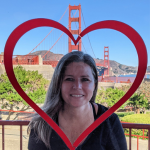
Hi, I’m Jill!
I’ve been sharing San Francisco travel advice since 2009 and have helped millions of people explore the city like a local. Whether you’re dreaming of sea lions, cable cars, or a great sourdough bread bowl, I’m here to help you plan an unforgettable trip with real tips from someone who actually lives here.
Comments? Questions? Suggestions?
I would love for you to join me in my private Facebook group!
It's a great place to interact with me and others who are familiar with the area.
You can ask questions, get advice for your upcoming stay, and then share your photos and advice with others when you return home. It's a great community and the fastest way to get answers to those nagging questions about your visit!
